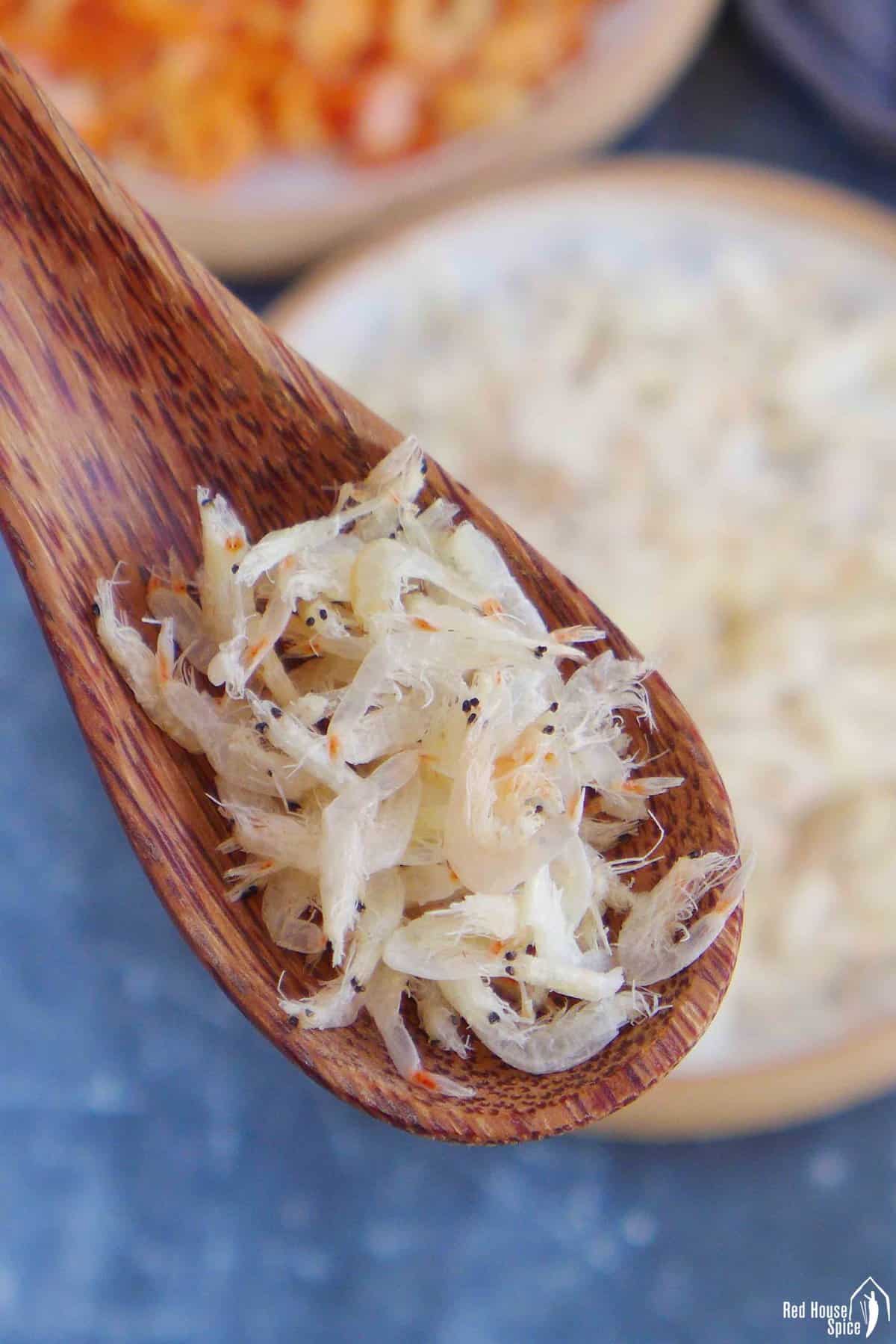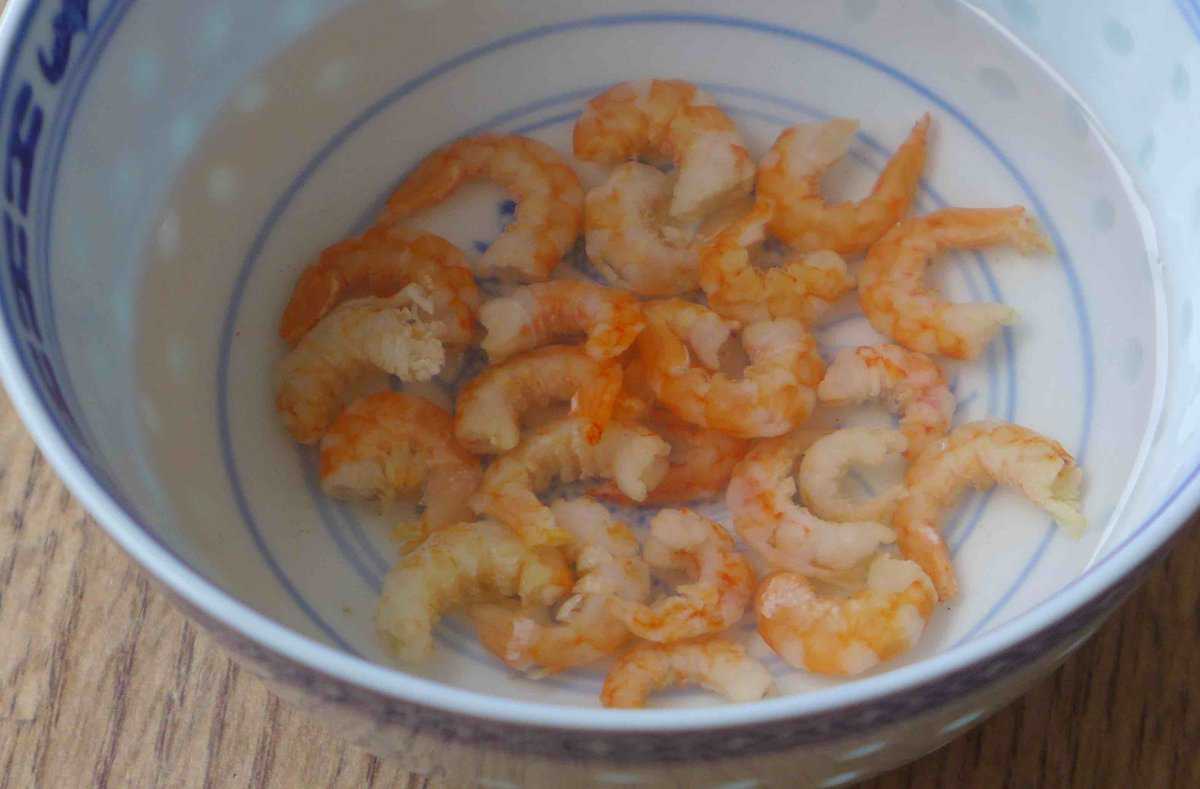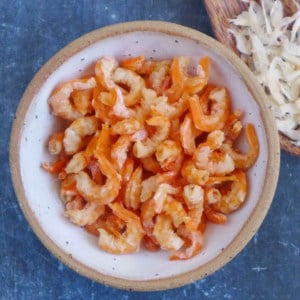A secret ingredient to rich umami taste, dried shrimp contributes to many delicious dishes. Here’s a how-to guide covering everything you need to know about it.
Dried shrimp are a popular pantry staple used in many Asian and Southeast Asian cuisines Their intense umami flavor and versatility make them an excellent addition to soups, sauces, stir-fries, and more However, if you’re new to cooking with dried shrimp, you may be wondering how exactly to eat them. Here’s a complete beginner’s guide to eating dried shrimp, from prepping to cooking techniques.
Buying and Storing Dried Shrimp
When shopping for dried shrimp, look for plump whole shrimp with a pinkish-orange hue. Avoid any with black spots or a strong fishy odor, which indicates spoilage. Dried shrimp are sold by weight or volume. A 1-ounce package contains around 20-30 shrimp.
Once home, store dried shrimp in an airtight container in a cool, dry place away from sunlight They’ll keep for up to 6 months For maximum flavor and texture, try to use them within a few months.
Prepping Dried Shrimp
Before cooking with dried shrimp, they need to be reconstituted by soaking in liquid. This plumps them up and makes them easier to chop.
- Place shrimp in a bowl and cover with warm water. Soak for 15-20 minutes.
- Drain, then gently squeeze out excess moisture.
- Pat dry with paper towels.
- Remove legs and shells, if needed. The shrimp can be used whole, chopped, or ground.
Cooking with Dried Shrimp
There are many ways to eat reconstituted dried shrimp. Here are some of the most popular preparation methods:
Soups and Stews
- Add whole shrimp to simmering soups and stews. They’ll impart savory umami flavor as they cook.
- Blend rehydrated shrimp into a paste and stir into soups for a more intense, seafood taste.
Stir-Fries
- Finely chop and sauté with garlic, ginger, and aromatics for a few minutes before adding other ingredients.
- Sprinkle whole shrimp on top of a finished stir-fry dish.
Rice Dishes
- Sauté chopped shrimp with garlic before adding rice and liquid.
- Mix ground dried shrimp into rice flour for savory shrimp rice cakes.
- Use whole shrimp as a topping for fried rice.
Salads and Vegetables
- Toss chopped rehydrated shrimp with green papaya salad, mango salad, or cucumber salad.
- Add to stir-fries and sautés with vegetables like bok choy, green beans, and eggplant.
Sauces, Dips, and Dressings
- Blend into a paste to make a tangy shrimp sauce or dipping sauce.
- Mix with mayonnaise or yogurt for a creamy shrimp dip.
- Whisk into oil and vinegar for a shrimp-infused salad dressing.
Snacks
- Skewer onto sticks as shrimp pops. Coat with a sweet and spicy glaze.
- Sprinkle onto crackers, flatbreads, or dumplings for an extra flavor punch.
Tips for Cooking with Dried Shrimp
- Start with small amounts, as little as 1 teaspoon, then adjust to taste. Their flavor can be quite intense.
- Sauté the shrimp in oil or broth to mellow their taste and bring out their sweetness before adding to other ingredients.
- Pair dried shrimp with garlic, ginger, scallions, chili peppers, fish sauce, lime, and cilantro.
- Add near the end of cooking for maximum flavor impact.
Dried shrimp are endlessly versatile and can elevate simple rice and noodles into something special. With this beginner’s guide, you’ll be ready to start enjoying this flavorful pantry staple in all sorts of delicious ways.

What is dried shrimp
Essentially, dried shrimp are sun-dried or baked (after being boiled) shrimp that has been completely or partially dehydrated. There is no dish that is made without them, but they are an important part of many classics that change how they taste.
To me, it is like an “unsung hero” in dishes. Even though its small size (often finely chopped) makes it easy to miss, the flavor it adds is rarely forgotten.
Like popular Asian ingredients like fish sauce or shrimp paste, dried shrimp gives food a unique umami (Xiān Wèi/鲻味) taste, which means savoriness and is one of the five basic tastes. It goes well with any ingredient, but I think it really shines in dishes that are mostly made with plant-based ingredients, like g. Tofu and Vegetable Soup, Turnip Cake, and more.
There are two types of dried shrimp used in Chinese cuisine: regular ones and papery ones.
Regular dried shrimp

The most common one is known as Xiā Mǐ/虾米, Hǎi Mǐ/海米, or Gān Xiā Rén/干虾仁. They’re orange-looking, firm to the touch, and have their heads and most of the skin removed.
They come in different sizes, ranging from ⅓ to 1 inch (1-2½ cm). The bigger ones are usually more pricey, but I find smaller ones are equally good in flavor.
Papery dried shrimp

This type is known as Xiā Pí/虾皮, which means “shrimp skin” literally. They are tiny, beige-colored shrimp that have heads and tails intact. They don’t look as dry or firm as the regular version and have a crispy texture.
The taste of papery dried shrimp is milder than regular dried shrimp. It has a sweet undertone that I really like. They can be used directly without soaking.
You can cook dried shrimp in a lot of different ways, like in soups, broths, dumpling fillings, stir-fries, fried rice, fried noodles, braised or steamed dishes, and more.
Their flavor goes a long way, but they are only needed in small amounts most of the time. Here are a few general rules to follow when using them:
- If you are using regular ones, you will need to rehydrate them first (read more in the next section).
- Papery ones can be used directly without soaking.
- They can be chopped up, ground, or added whole to dishes to give them more texture.
- They can taste better if you fry them in a little oil.
The following recipes on the blog are great examples of using this flavorful ingredient:
Regular dried shrimp needs to be rehydrated before cooking. This process helps to release their aroma. Also, you’ll find it much easier to chop the softened ones into small pieces.

- Put as many dried shrimp as the recipe says to a small bowl. Then, add enough hot water to cover the shrimp completely. Soak them for about 10 minutes, or until they get soft and plump.
- If the shrimp are very small, you can use them whole, but if they’re bigger, you can cut them up.
Tip: Do not discard the water in which the dried shrimp has been soaked. It’s full of flavor and thus can be added to the dish you’re cooking. This is similar to how you’d use the soaking water for shiitake mushrooms.
Dried shrimp can be found in Chinese/Asian grocery stores. It’s usually in plastic packaging and kept in either the chilled or frozen food sections. Some online shopping platforms, such as Amazon, also have it in stock.
Good quality ones have uniform size and color. The regular kind should be bright orange, and the papery kind should have its whole body (head and tail not broken).

Once you open the package, put the dried shrimp in a container that won’t let air in. Keep it in the fridge to keep it fresh. Use it up in two months.
If you have bought a large amount, divide them into small portions and freeze in separate airtight bags. Consume before its expiry date.
If you find it hard to source dried shrimp, here are a few substitute options:
- Dried scallops (Gān Bèi/干贝)
- Shrimp paste (Xiā Jiàng/虾酱)
- Fish sauce (Yú Lù/鱼露)
No matter which one you use, make sure you limit its quantity. All of them have a rather concentrated flavor and are high in sodium.

How to use Dried Shrimp
How do you eat dried shrimp?
Simply soak the dried shrimp in hot water for about 15-20 minutes to rehydrate them, then toss them into your simmering broth. They will infuse the liquid with their unique umami flavor, adding depth and complexity to your soups and stews. If you’re making a seafood chowder or a vegetable soup, dried shrimp can be a fantastic addition to the mix.
How to cook dried shrimp to perfection?
Here are some tips on how to cook dried shrimp to perfection. When using dried shrimp in your recipes, it’s important to rehydrate them properly before cooking. Start by rinsing the dried shrimp in cold water to remove any excess salt or debris. Then, soak the shrimp in warm water for about 15-20 minutes, or until they become plump and tender.
What is dried shrimp used for?
They are used in many Asian cuisines, to impart a unique umami and seafood-like taste. In Chinese cuisine, dried shrimp are extensively used in the northern and southern cuisines. For example, it is one of the ingredients used in the Cantonese XO sauce. It can be used in stir-fried and braised dishes, soups, salads, dumplings, etc., to add flavor.
How do you rehydrate dried shrimp?
In a small bowl, add the amount of dried shrimp that a recipe calls for, then pour in hot water enough to fully submerge the shrimp. Leave to soak for 10 minutes or so until they become plump and softer. You can either use the rehydrated shrimp in whole, if they’re quite small in size or cut them into finer pieces.
